B.B. King – The Blues Man
B.B. King – The Blues Man
I've traveled for miles around It seems like everybody wanna put me down Because I'm a blues man But I'm a good man, understand
In the mid-1950s, King was performing at a dance in Twist, Arkansas, when a few fans became unruly and started a fire. King ran out, forgetting his guitar, and risked his life to go back and get it. He later found out that two men fighting over a woman named Lucille knocked over a kerosene heater that started the fire. He named the guitar Lucille, "to remind myself never to do anything that foolish."
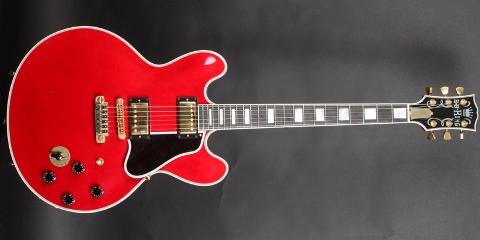
Gibson Lucille, 2009
King used various models of Gibson guitars over the years and named them each Lucille. In the 1980s, Gibson officially dropped the model number ES-355 on the guitar King used, and it became a custom-made signature model named Lucille, manufactured exclusively for the "King of the Blues."
B.B. King (tango)
The future blues icon was born Riley B. King on Sept. 16, 1925, in Itta Bena, Miss., and grew up in several nearby towns, most prominently Indianola, reared primarily by his grandmother after his father left home and his mother died. While picking cotton on a sharecropping farm, he sang gospel in a church choir and developed an affinity for blues guitar, eventually studying with bluesman Bukka White, with whom he lived for nearly a year.
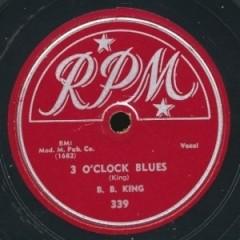
Three O’Clock Blues, single 1951
He moved to Memphis in 1946, where he became known as the “Beale Street Blues Boy.” He cut his first single in 1949, and scored a major hit in 1951 with his version of Lowell Fulson’s “Three O’Clock Blues.” He finally put together a touring band in 1955 and began a lifelong commitment to the road, where his ebullient personality flourished.
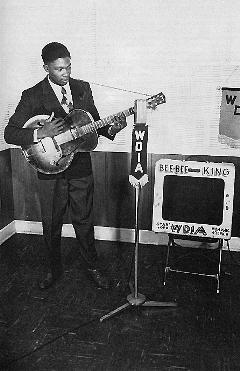
Beale Street Blues Boy
In the early 1960s, King signed with ABC-Paramount, then home to Ray Charles, and his records took on a more sophisticated tone mostly due to him working with arrangers for the first time. His 1965 concert album “Live at the Regal”, recorded in Chicago, became a hallmark concert LP.
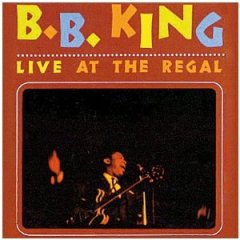
Live At The Regal, album
In February 1967, King was booked on a bill at the Fillmore Auditorium in San Francisco with Moby Grape and the Steve Miller Band, a booking King thought was a mistake after he arrived, having never played to an all-white audience. Miller and promoter Bill Graham were big fans who wanted him on the bill. "We were all just thrilled to the core," Miller said in ‘B.B. King Treasures’. "It was a very emotional night. He had tears in his eyes because the audience, as soon as B.B. came out on stage, just stood up and gave him a standing ovation."
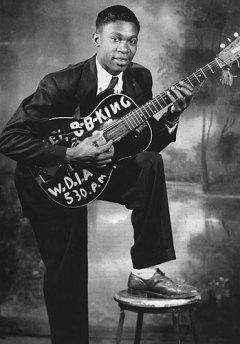
B. B. King
King recalled it as the night he was viewed as a musician instead of as a blues singer. It also led to King meeting and performing with the white blues-rock musicians, among them Bloomfield, Al Kooper and the Blues Project and Clapton, who told journalists the highlight of his first visit to the U.S. was meeting King.
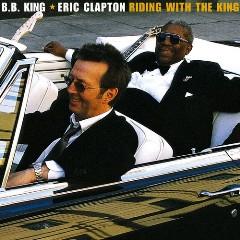
E.Clapton B.B. King - Riding with The King, 2000
It was during this era that a generation of white rock ‘n’ rollers on both sides of the Atlantic began immersing themselves in blues, and King became a hero of sorts to Clapton, Peter Green, the Rolling Stones, the Animals and countless others. Amid this rising appreciation for “authentic” Mississippi sounds by a generation that had never set foot on a plantation, King continued to work both sides of the commercial fence: his raw, raucous concert performances and his sophisticated, pop-sounding studio recordings, epitomized by “The Thrill is Gone.” The latter was his biggest hit in the late ‘60s, its wrenching vocal underscored by melancholy keys and sighing strings.
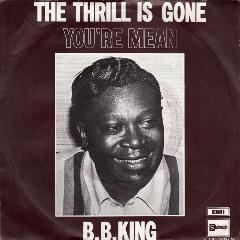
The Thrill is Gone, 1969
King was one of a precious few bluesmen to score hits consistently during the 1970s, and for good reason: he wasn't afraid to experiment with the idiom. In 1973, he ventured to Philadelphia to record a pair of huge sellers, "To Know You Is to Love You" and "I Like to Live the Love." In 1978, he joined forces with the jazzy Crusaders to make the gloriously funky "Never Make Your Move Too Soon" and an inspiring "When It All Comes Down."
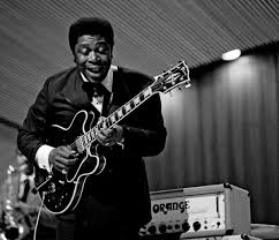
B.B. King
King's recording career slowed down in the 1980s even as he was adding new countries on tour routes. U2 wrote “When Loves Comes to Town” for King, which they released in 1988 and featured in the film Rattle and Hum. The 1990s saw the creation of B.B. King’s Blues Clubs starting in Memphis in 1991 and then Los Angeles in 1994. A third club opened in New York City in June 2000. King's autobiography,Blues All Around Me,written with David Ritz, was published in 1996. At that time he had a resurgence as a recording artist, putting out 10 albums of new recordings between 1995 and 2008.
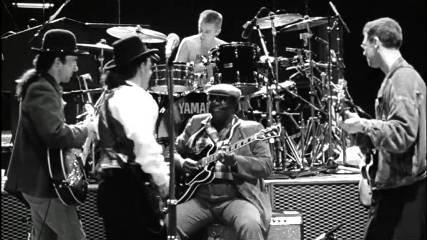
U2 with B.B. King
King's music was a unique blend of traditional blues, jazz, pop and swing. And although he was highly skilled on the guitar, he never learned to play and sing at the same time, so he developed a call-and-response between him and Lucille. His songs nearly always alternated between his rustic, crying vocals and his spine-tingling, bent-note playing, both accompanied by facial expressions that were at turns ugly and beatific.
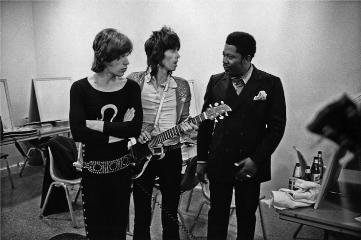
Jagger, Richards and B.B. King
"Sometimes I just think that there are more things to be said, to make the audience understand what I'm trying to do more," King told The Associated Press in 2006. "When I'm singing, I don't want you to just hear the melody. I want you to relive the story, because most of the songs have pretty good storytelling."
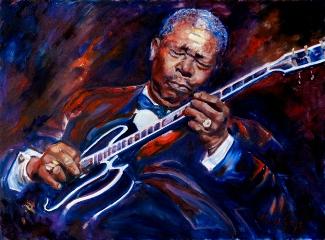
B.B. King
Over the years, he racked up 30 Grammy nominations and 15 wins, including two in 2000: one along with Eric Clapton for Best Traditional Blues Album for "Riding with the King" and another with Dr. John for Best Pop Collaboration with Vocals for "Is You Is, or Is You Ain't (My Baby)." His last was in February 2009 for Best Traditional Blues Album for "One Kind Favor" (2008).
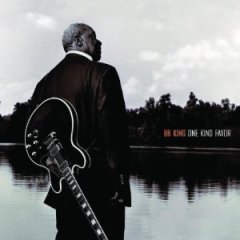
One Kind Favor, album 2008
"I'm slower," he told Rolling Stone in 2013. "As you get older, your fingers sometimes swell. But I've missed 18 days in 65 years. Sometimes guys will just take off; I've never done that. If I'm booked to play, I go and play."
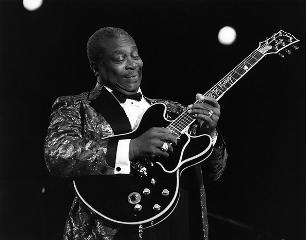
B.B. King
In 1999, in a public conversation with William Ferris, Mr. King recounted how he came to sing the blues. “Growing up on the plantation there in Mississippi, I would work Monday through Saturday noon,” he said. “I’d go to town on Saturday afternoons, sit on the street corner, and I’d sing and play.”
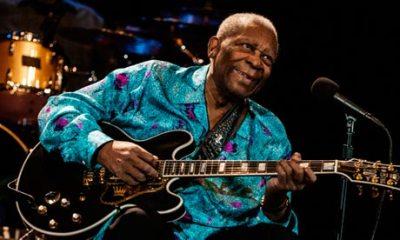
B.B. King
“I’d have me a hat or box or something in front of me. People that would request a gospel song would always be very polite to me, and they’d say: ‘Son, you’re mighty good. Keep it up. You’re going to be great one day.’ But they never put anything in the hat.”
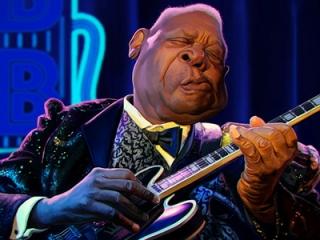
B.B. King in painting
“But people that would ask me to sing a blues song would always tip me and maybe give me a beer. They always would do something of that kind. Sometimes I’d make 50 or 60 dollars one Saturday afternoon. Now you know why I’m a blues singer.”
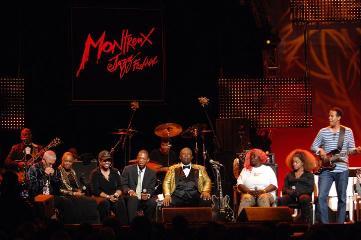
B.B. King and Friends, Montreux 2006
The iconic musician, along with his ever-present guitar Lucille, spent nearly 70 years thrilling audiences and spreading the music he learned as a poverty-stricken youth in the Mississippi Delta all over the world. King, 89, died in Las Vegas, 14 May 2015.
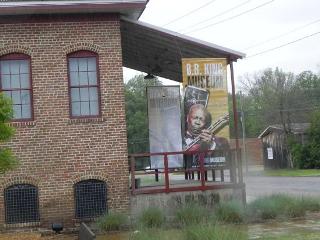
Indianola, Mississippi, Museum of B.B. King
Last Updated (Sunday, 17 May 2015 22:26)








